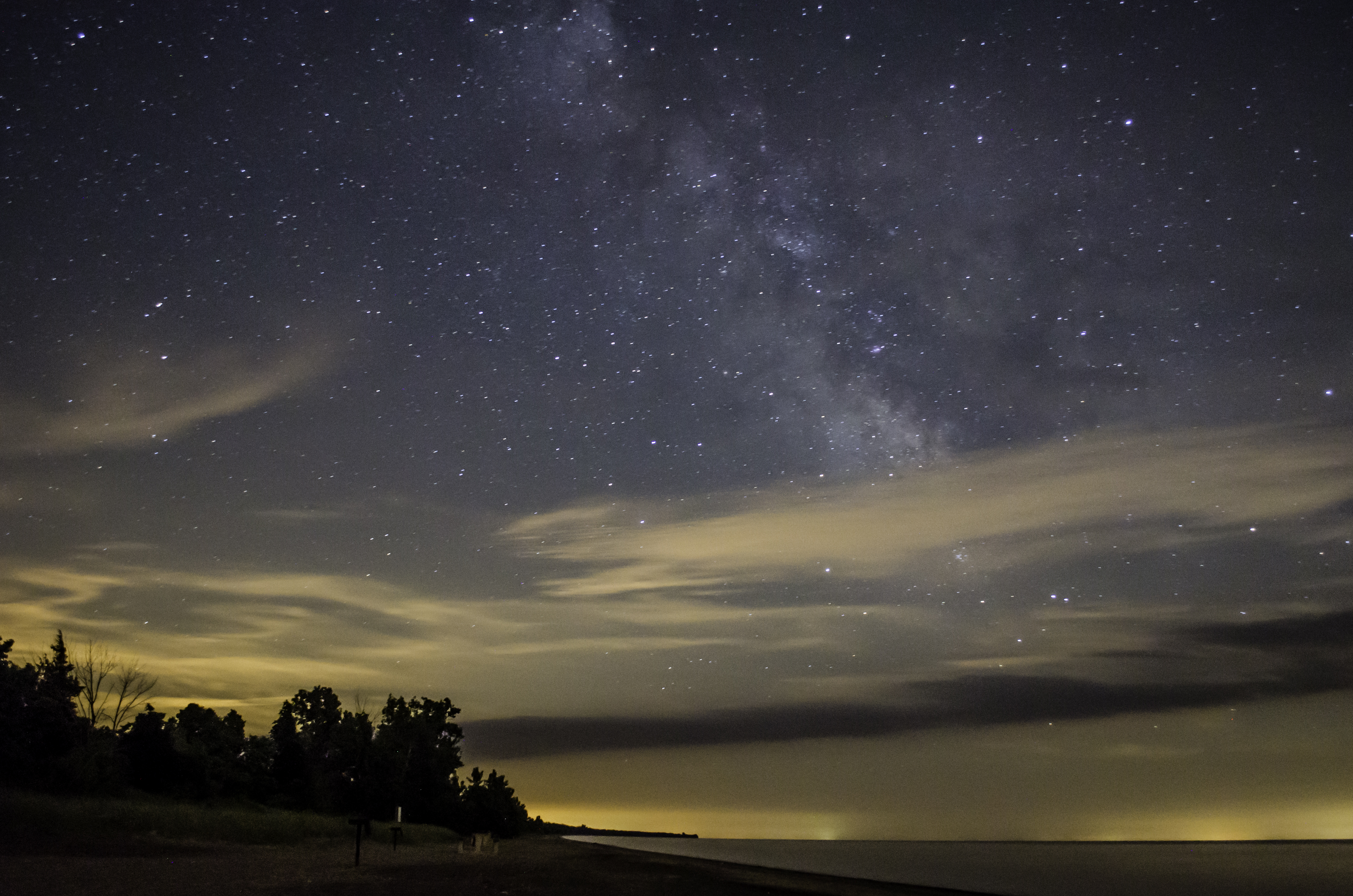Point Pelee National Park - Ontario | Dark-Sky Preserve
Photos: Parks Canada / K Bickell (top left); Parks Canada / Scott Munn (bottom right)
Ontario’s Point Pelee National Park was designated as a RASC Dark-Sky Preserve on May 12, 2006, in partnership with Parks Canada and the Windsor Centre of the RASC. The event marked the first time that a park within the Canadian national parks system was recognized by the RASC; this milestone paved the way for more collaborations across the country between Parks Canada and the Royal Astronomical Society of Canada.
At 15 square kilometres in size, Point Pelee is Canada’s second smallest National Park. It is geographically unique as it encompasses the southernmost contiguous lands in Canada, and with Lake Erie as the southern boundary, it allows glimpses of parts of the southern sky unattainable from other regions in the country. The core area of the Dark-Sky Preserve has a nighttime sky quality level of approximately 21.2 - 21.5 mag/arcsec2, though skies in the park are under threat due to light pollution from greenhouses north of the Park.
Day-use visitors should check the Park’s hours of operation, which vary seasonally. For those wishing to stay overnight, the Park offers one campground with 24 oTENTiks at Camp Henry. Reservations can be made on the Parks Canada reservation service.
Visiting stargazers can pick up a seasonal star chart at the entrance kiosk. The Park remains open until midnight on monthly Dark Sky Nights, and one full overnight viewing opportunity in August is centered on the Perseid meteor shower (details vary by year, so confirm via the Park’s website first). Visitors can check the Park's event calendar for upcoming programs. Dark Sky Nights and special events are commonly attended by members of the RASC Windsor Centre. West Beach and the Visitor Centre parking lot are the best car-accessible locations for viewing the night sky. There is no public access to electricity on site.
The nearby towns of Leamington (7 km) and Kingsville (18 km) provide accommodations, groceries, fuel, pharmacies, shopping, and restaurants. There are also a few campgrounds in the area. Farther afield are the larger cities of Windsor (65 km), London (180 km), and Toronto (355 km).
With its Carolinian forest, beach, cedar savanna, and marsh, the area is an internationally-recognized Important Bird Area with habitat for waterfowl, shorebirds, and warblers. Each year, millions of migratory birds (including some rare and threatened species) funnel through the small spit of land jutting into the western basin of Lake Erie that is protected by Point Pelee National Park. Many of the smaller bird migrants fly nocturnally. Point Pelee has rightly cultivated an international reputation as a birding mecca. Over 390 bird species, 70 species of trees, 40+ species of fish, reptiles (including 6 species of turtles), and amphibians are known to frequent the Park at various times of the year. Point Pelee National Park is also on the migratory route of Monarch Butterflies.
Point Pelee is home to more at-risk species than any other National Park in Canada, many of which are reliant on naturally dark nights. One such species is the Spotted Gar, a predatory fish that catches 70% of its prey during times of darkness. Another Park resident is the Eastern Musk Turtle, a largely nocturnal species that becomes active as the sun sets. The endangered Swamp Rose-Mallow’s large, showy blooms open and close based on light levels, and its blooming period is controlled by seasonal changes in day length.
Resources on the ecological value of Point Pelee National Park are available here.
Visit their website!


